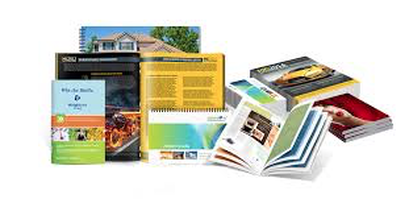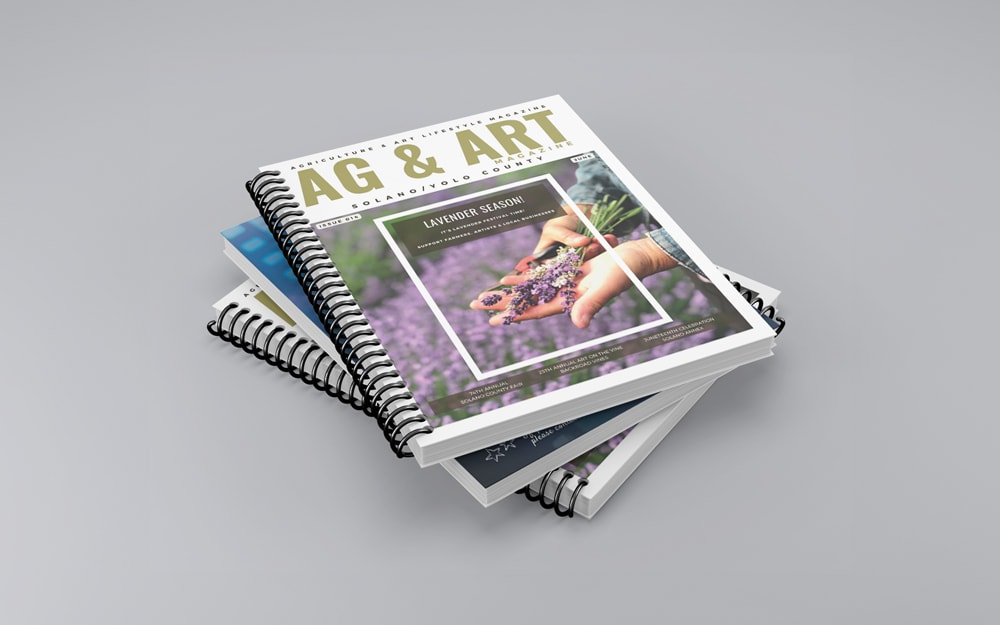Why More Companies Are Turning to Local Booklet Printing Services
Wiki Article
The Necessary Overview to Recognizing Pamphlet Printing Options and Techniques
The process of brochure printing includes multiple considerations that can considerably affect the end product. From choosing the ideal style and size to comprehending the nuances of binding techniques, each selection plays an important function. In addition, aspects such as paper supply and printing methods more influence the efficiency of the brochure. As one navigates these alternatives, it becomes crucial to comprehend exactly how they interconnect and what that implies for the total end result.Understanding Booklet Sizes and layouts
When taking into consideration booklet printing, understanding the different styles and sizes offered is essential for accomplishing the desired discussion. Brochures can be produced in numerous formats, consisting of saddle-stitched, spiral-bound, and perfect-bound, each offering distinctive benefits. Common sizes range from standard letter (8.5 x 11 inches) to smaller choices like A5 (5.8 x 8.3 inches), enabling for flexibility based upon content and target audience.Selecting the ideal size can influence both the format and visitor engagement. Larger sizes could suit visually driven web content, while smaller sized formats may be extra mobile and straightforward. Additionally, the variety of web pages impacts the choice of binding technique, as thicker booklets may require stronger bindings. Inevitably, recognizing these facets enables for a much more tailored technique, guaranteeing that the final item straightens with the designated message and aesthetic, enhancing the overall performance of the communication.Picking the Right Paper Stock

Binding Methods: Alternatives and Considerations
When it comes to binding approaches for brochures, a number of options are readily available, each with distinct benefits. Saddle stitch binding supplies an affordable option for thinner booklets, while perfect binding techniques offer an even more refined appearance for thicker magazines. Wire-O binding attracts attention for its resilience and ease of use, making it optimal for papers that need versatility.Saddle Stitch Binding
Saddle stitch binding supplies a practical and cost-effective solution for assembling booklets, making it a preferred selection amongst companies and publishers. This binding method entails folding sheets of paper in fifty percent and stapling them along the fold line, producing a organized and cool look. Usually suitable for booklets with a reduced page count, saddle sewing is suitable for publications, brochures, and educational materials. The simpleness of this strategy enables quick manufacturing and is commonly favored for short runs or advertising products. It is essential to keep in mind that saddle stitch binding may not be ideal for thicker brochures, as the spine might not hold up under enhanced weight. On the whole, it stays a dependable alternative for numerous printing projects.Perfect Binding Methods
Perfect binding is a widely utilized technique that supplies a specialist and refined coating to booklets and magazines. This approach involves gluing the web pages with each other at the spine making use of a strong adhesive, enabling for a tidy edge and the capability to hold a bigger number of pages contrasted to saddle sewing. Perfect binding is particularly appropriate for thicker pamphlets, such as brochures and yearly records, where a durable, level back is desired. Furthermore, it uses the alternative for a printed cover that can be created to boost visual appeal. Factors to consider such as web page count, paper weight, and the intended use of the brochure ought to be taken right into account, as they can impact longevity and total high quality.Wire-O Binding Alternatives
Wire-O binding, known for its durability and versatility, supplies an exceptional option for pamphlets that call for very easy web page transforming and an expert look. This binding technique utilizes a series of metal loops that hold pages firmly, permitting them to exist level when open. It is especially appropriate for presentations, catalogs, and manuals as a result of its durable nature. Wire-O binding is offered in various shades and diameters, suiting various page matters and densities. Furthermore, it permits the incorporation of covers and tabs, enhancing the pamphlet's general aesthetic. Factors to consider for Wire-O binding consist of the choice of cord shade, the size of the loopholes, and the degree of customization wanted, all of which can greatly affect the end product's look and capability.Digital vs. Offset Printing: Which Is Best for You?
When choosing a printing method for pamphlets, understanding the distinctions between electronic and balance out printing is essential. Digital printing makes use of modern innovation to produce high-grade prints quickly and affordably, making it excellent for short runs or tasks needing fast turnaround times. It enables for customization, supplying the ability to print on-demand with marginal waste.In contrast, balance out printing is a conventional approach that masters generating large amounts with consistent high quality. It includes moving ink from a plate to a rubber blanket, after that to the paper, which causes dynamic shades and precise details. Nonetheless, offset printing normally requires longer setup times and is a lot more cost-efficient for larger volumes.Ultimately, the option in between electronic and counter printing depends on job demands, spending plan, and wanted quantity. For small, time-sensitive projects, digital could be the finest option, while balanced out may be more effective for bigger, top notch manufacturings.
Designing Your Booklet: Tips and Ideal Practices
When making a brochure, cautious attention to format, font option, and shade usage can significantly enhance its performance. A well-structured format guides the reader's eye, while ideal font styles guarantee readability and share the desired tone. Furthermore, effective usage of color can stimulate emotions and highlight crucial information, making the total style more impactful.Picking the Right Layout
Just how can one efficiently pick the right design for a pamphlet? It is crucial to assess the booklet's function and target audience. A tidy, organized format enhances readability and involvement. Utilizing a grid system can assist in aligning aspects consistently, producing a specialist appearance. Furthermore, incorporating visual power structure through varying dimensions and placements of images and text can lead the reader's eye and highlight vital information. It is likewise essential to leave sufficient white area, which protects against overcrowding and enables for much better emphasis. Finally, evaluating various formats via mock-ups can offer insight right into just how the design carries out in real-world situations, making sure that the last product meets both aesthetic and practical needs.Selecting Appropriate Fonts
A well-chosen font can significantly improve the general design of a booklet, complementing the layout and reinforcing the you can try this out content's message. The option of typefaces need to think about readability, specifically for body text, as it guarantees the information comes to all readers. Sans-serif fonts are often preferred for electronic layouts, while serif font styles can provide a conventional check it out feel in published products. It's recommended to limit font choices to 2 or three to maintain aesthetic comprehensibility. Furthermore, font dimension plays a crucial function; headings should be distinctive yet not overwhelming, while body text need to be comfortable for reading. When picking font styles, alignment with the pamphlet's style and target market is necessary for efficient interaction and visual appeal.Reliable Use of Shade
Color functions as a powerful tool in pamphlet design, guiding and shaping assumptions reader feelings. It can stimulate feelings of trust, calmness, or exhilaration, depending upon the tones selected. Designers must take into consideration color theory principles, making sure that the selected scheme aligns with the booklet's message and target audience. As an example, making use of cozy shades like red and orange can create urgency, while cooler tones like environment-friendly and blue foster tranquility.Additionally, comparison plays an essential duty; corresponding shades can enhance readability and visual appeal. Consistency in color usage across web pages better reinforces brand name identification and communication. Inevitably, reliable shade execution not just catches interest however likewise reinforces the booklet's purpose, making it an important aspect of successful layout.
Ending Up Touches: Coatings and Unique Impacts
While many consider the web content and format of a brochure the most crucial elements, the ending up touches, such as layers and unique effects, play an important duty in boosting its general appeal. Coatings can give security and sturdiness, guaranteeing that the booklet holds up against deterioration. Matte finishes supply an advanced, non-reflective surface, while shiny finishings can make colors show up more appealing and vibrant. Unique effects, like embossing or aluminum foil stamping, include a tactile measurement that can create an unforgettable impression. These strategies can highlight particular locations, drawing focus to important details or creating visual rate of interest. Additionally, UV finish can provide a high-shine coating that elevates the general look.Together, these ending up touches not only boost the booklet's aesthetic yet also connect expertise and interest to information, inevitably leaving an enduring influence on the reader.Cost Considerations for Brochure Printing
Understanding the various price considerations for pamphlet printing is vital for organizations and services intending to maximize their budgets. Secret aspects affecting costs include the option of binding, ink, and paper methods. Higher high quality products, such as exceptional paper or specialized inks, typically enhance the general cost. Furthermore, the dimension and web page matter of the pamphlet play a substantial duty; bigger pamphlets call for even more sources and time to produce.Another vital consideration is the printing technique, whether digital or offset, as each has its very own rates framework and viability for various amounts. Services must also factor in design prices, which can differ based upon intricacy and the usage of expert services. Ultimately, shipping and handling costs can include in the total amount, specifically for big orders. By examining these aspects, organizations can make informed choices that straighten with their monetary abilities while achieving the desired top quality in their published materials.Frequently Asked Inquiries
What Are the Ecological Effects of Booklet Printing?
The ecological influences of brochure printing include deforestation from paper manufacturing, carbon emissions from transport, and waste generation from thrown out materials - Booklet Printing. Sustainable techniques, such as utilizing recycled paper and environmentally friendly inks, can mitigate these resultsExactly How Can I Ensure Shade Accuracy in My Pamphlet?
To guarantee important link shade accuracy in a pamphlet, one need to make use of calibrated displays, utilize expert color accounts, conduct examination prints, and choose top quality printing solutions that use color matching and proofing choices for best outcomes.What Is the Typical Turn-around Time for Booklet Printing?
The regular turnaround time for pamphlet printing varies relying on the complexity and amount - Booklet Printing. Generally, it varies from a couple of days to two weeks, affected by elements such as publishing methods and completing needsAre There Minimum Order Quantities for Pamphlet Printing?

Can I Print Brochures in Several Languages?
Publishing brochures in numerous languages is feasible. Several printing solutions supply options for bilingual or multilingual layouts, permitting efficient communication. Careful planning guarantees that design elements accommodate various languages without compromising readability or visual appeals. Additionally, factors such as paper stock and printing strategies more affect the performance of the brochure. When thinking about brochure printing, comprehending the various formats and dimensions readily available is necessary for accomplishing the preferred discussion. When picking a printing technique for brochures, comprehending the distinctions between digital and counter printing is crucial. In addition, the size and page matter of the brochure play a significant duty; bigger brochures require even more resources and time to produce.Another important factor to consider is the printing method, whether digital or countered, as each has its own pricing framework and suitability for various quantities. The ecological effects of booklet printing include logging from paper production, carbon exhausts from transportation, and waste generation from disposed of materials.Report this wiki page